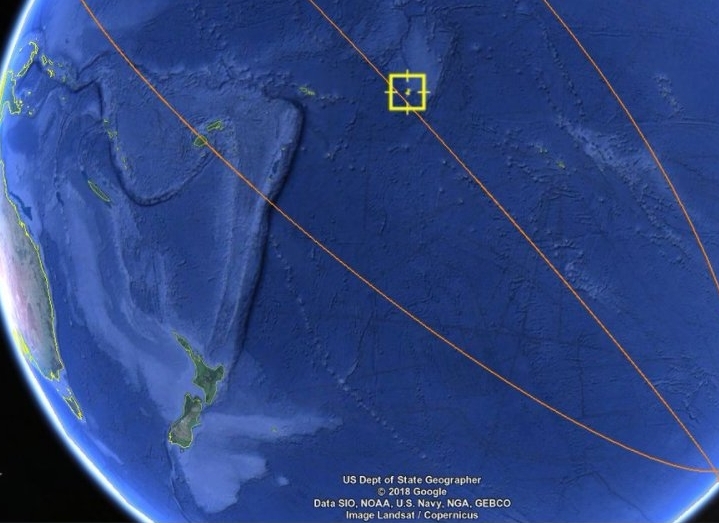China’s “Heavenly Palace” returns to Earth and burns up
Due to the station's track, it is unlikely anyone on land had much of a view.

Enlarge / The Tiangong-1 space station broke up northwest of Tahiti on Sunday night, US time.
US Department of State
In recent weeks space agencies and satellite trackers have refined estimates for when the station, which Chinese engineers had lost control of, would lose enough altitude to begin plummeting rapidly toward Earth and break apart in the atmosphere. It posed virtually no threat to anyone on the ground—and indeed it did break apart over the vast Pacific Ocean—but that didn't stop some pretty wild speculation in recent days.
Due to the track of the station, it seems unlikely that anyone on land had much of a view of the reentry event. Also, there appear to have been few airplanes in the vicinity of the reentry. The best bet for any kind of imagery or video, therefore, is probably someone on board a ship. But the odds of even this seem fairly low.
A test station
The space station launched in 2011, and it served as an initial test bed for life-support systems in orbit and as a precursor for China's plans to launch a larger space station in the 2020s. In 2012 and 2013, the 10.4-meter-long Tiangong-1 station, nicknamed "Heavenly Palace," housed two different crews, the first staying for 12 days and the second for 15 days.After these tests, China had planned for a controlled reentry to Earth's atmosphere. And, for several years, the Chinese space agency employed periodic re-boosts to keep Tiangong-1 at an altitude of 300km to 400km above the Earth's surface. (All satellites and space stations are subject to this weak but persistent atmospheric drag that far above the planet.) But in 2016, Chinese engineers lost control of the space station and the ability to fire its engines.
Without a means of steering the station, that left the unpalatable option of an eventual, uncontrolled reentry. In recent months, China has shared information about the station's position with international officials, and the country has shared daily updates on its human spaceflight website. Finally, on Sunday night, the end came.

No comments:
Post a Comment